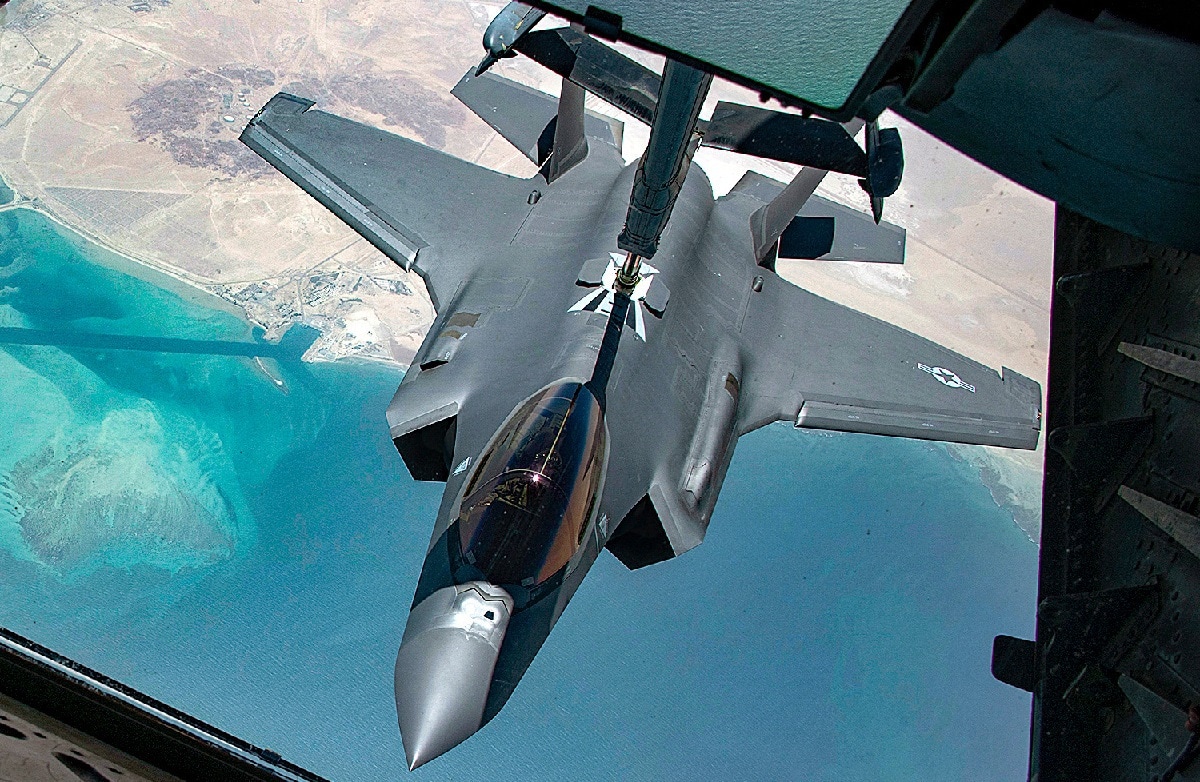There are many planes, both past, and present, that would make any rankings for the top US military aircraft of all time. Planes like the F-22, B-2 Bomber, F-117, F-35 and many more have a good shot at making the list. But which planes truly stand out? We put this question to our Defense Editor for some answers. Yes, my Editor has given me quite the tough assignment. Just how do you pick the five best historical airplanes in the U.S. Military?
Well, the way I approached it was to select well-known airplanes that are powerful, dangerous for the enemy, and have a colorful history.
While I will admit many historians and military experts may disagree, let’s take a further look at what makes these specific airplanes so deadly.
5 Best Airplanes in the History of the U.S. Military: B-17 Flying Fortress
It’s hard to believe (maybe it’s not known) just how many missions the B-17 Flying Fortress bomber flew during World War II. This airplane was a feat of U.S. engineering prowess. It went from blueprints to flight testing in just 12 months. Initial combat was conducted in 1941 when the B-17 was sold to the British. The B-17E had nine machine guns and could carry 4,000 pounds of bombs. Boeing built nearly 7,000 B-17s.

Conceived in 1938 by Consolidated Aircraft, a Lockheed Martin legacy company, the original B-24 prototype was designed to fly faster and carry a larger payload than the US Army Air Corps’s B-17 Flying Fortress. I

Boeing B-17. Image Credit: Creative Commons.
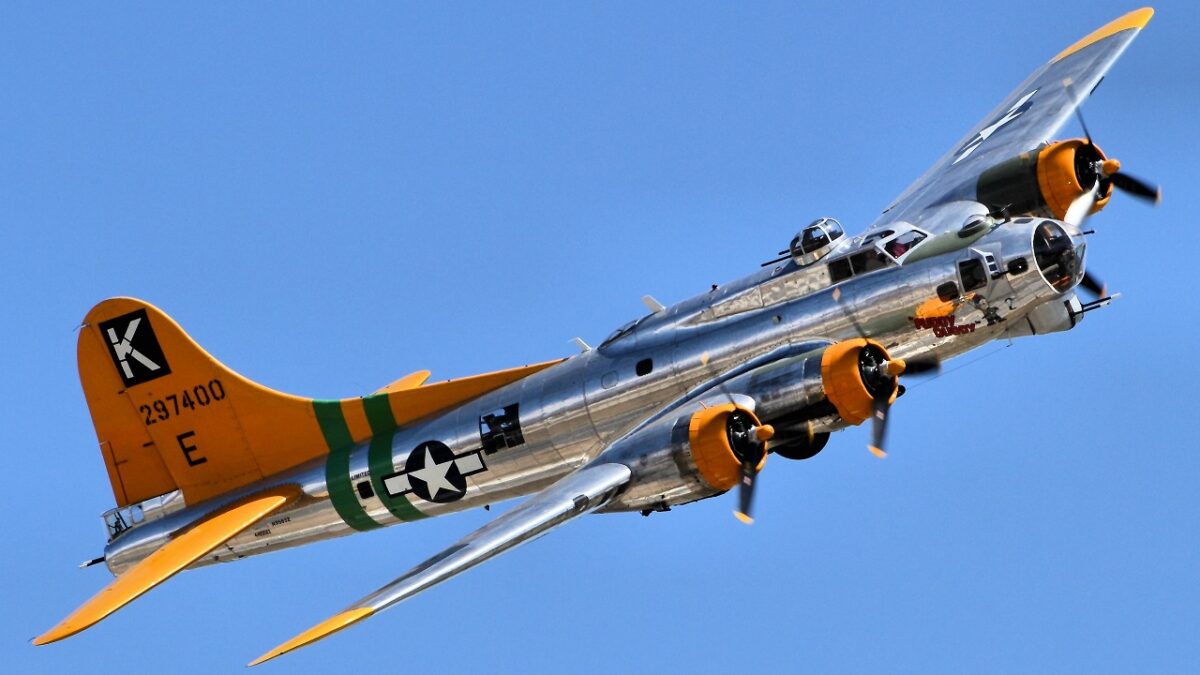
Airwolfhound from Hertfordshire, UK – B-17 Flying Fortress – Chino Airshow 2014.
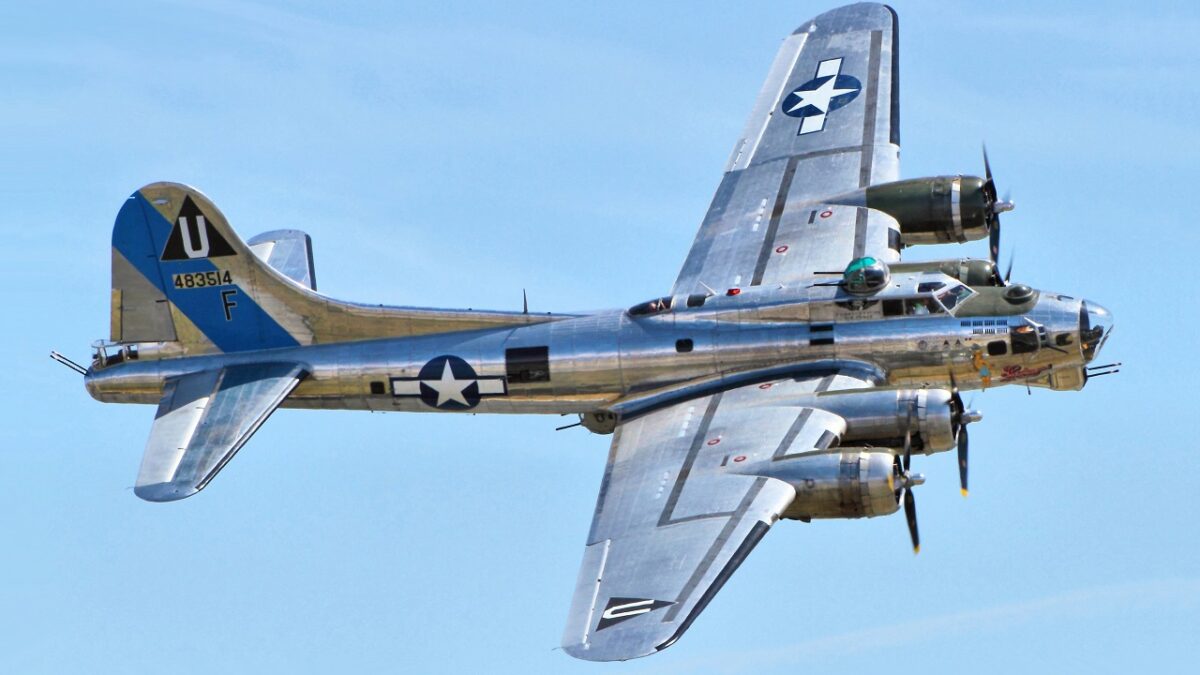
Operation Pike. Image of B-17. Image Credit: Creative Commons.
They were famed for attacking Germany, but they also over-awed the Japanese in the Pacific. The B-17 had four engines, but it could lose two and still limp back home to safety. The fuselage and wings could take dozens of hits from flak and keep going on the bomb run.
Pilots and crew rarely gave up on the airplane. It is difficult to fathom winning World War II without the B-17.
5 Best Airplanes in the History of the U.S. Military: B-52 Stratofortress
A bomber built to stand the test of time, it’s the only airplane that is truly multi-generational; flown by your grandfather, father, uncle, brother, or cousin. We are talking the B-52 and it has been in service since 1955 and could fly into the 2050s – that’s over 100 years of missions.
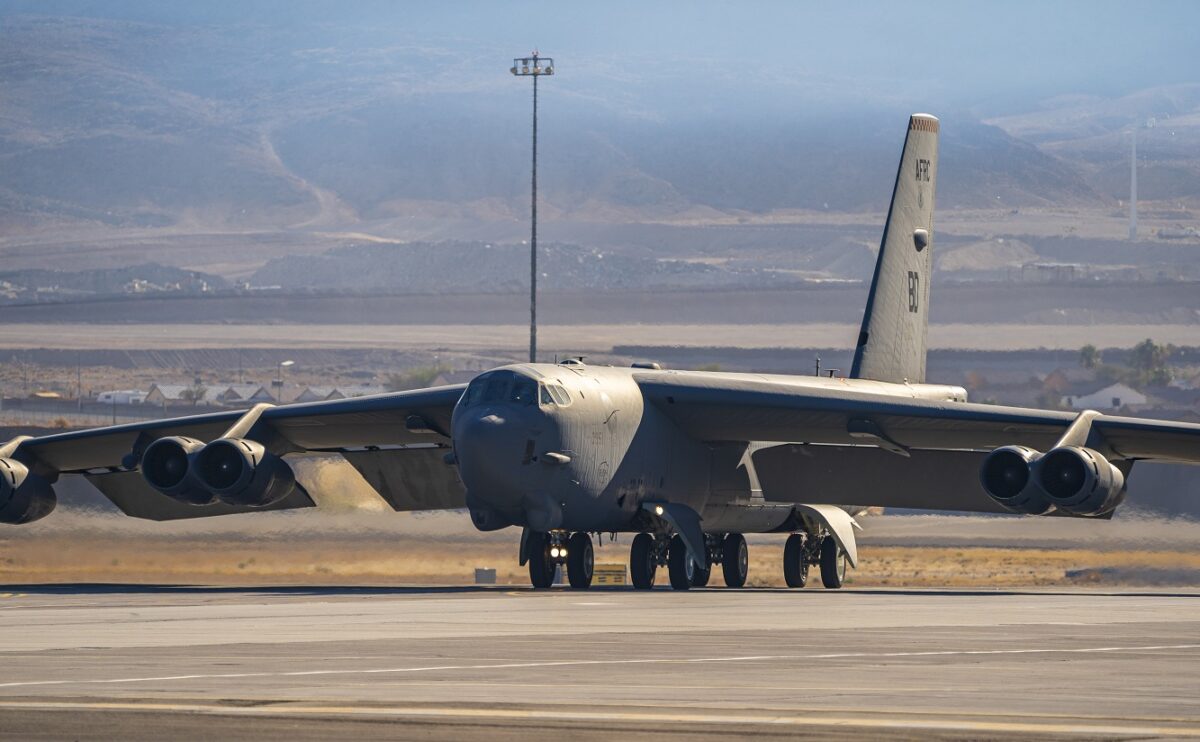
A B-52 Stratofortress bomber aircraft assigned to the 340th Weapons Squadron at Barksdale Air Force Base, Louisiana, taxis to take off during a U.S. Air Force Weapons School Integration exercise at Nellis AFB, Nevada, Nov. 30, 2021. The U.S. Air Force Weapons School teaches graduate-level instructor courses that provide advanced training in weapons and tactics employment to officers and enlisted specialists of the combat and mobility air forces. (U.S. Air Force photo by William Lewis)
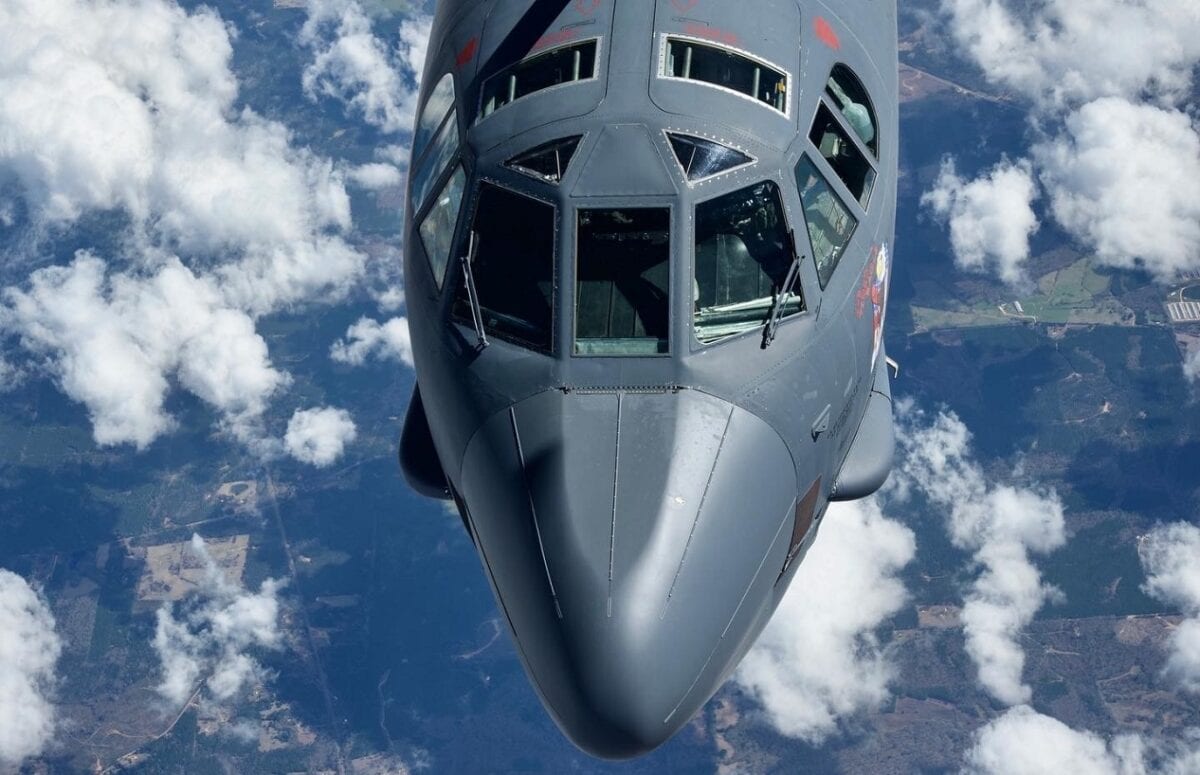
A U.S. Air Force KC-135 Stratotanker with the 927th Air Refueling Wing, Florida refuels a B-52 Stratofortress with the Barksdale Air Force Base, Louisiana, on February 26, 2021. On this mission there were two Stratotankers that refueled three Stratofortresses. (U.S. Air Force photo by Tiffany A. Emery)
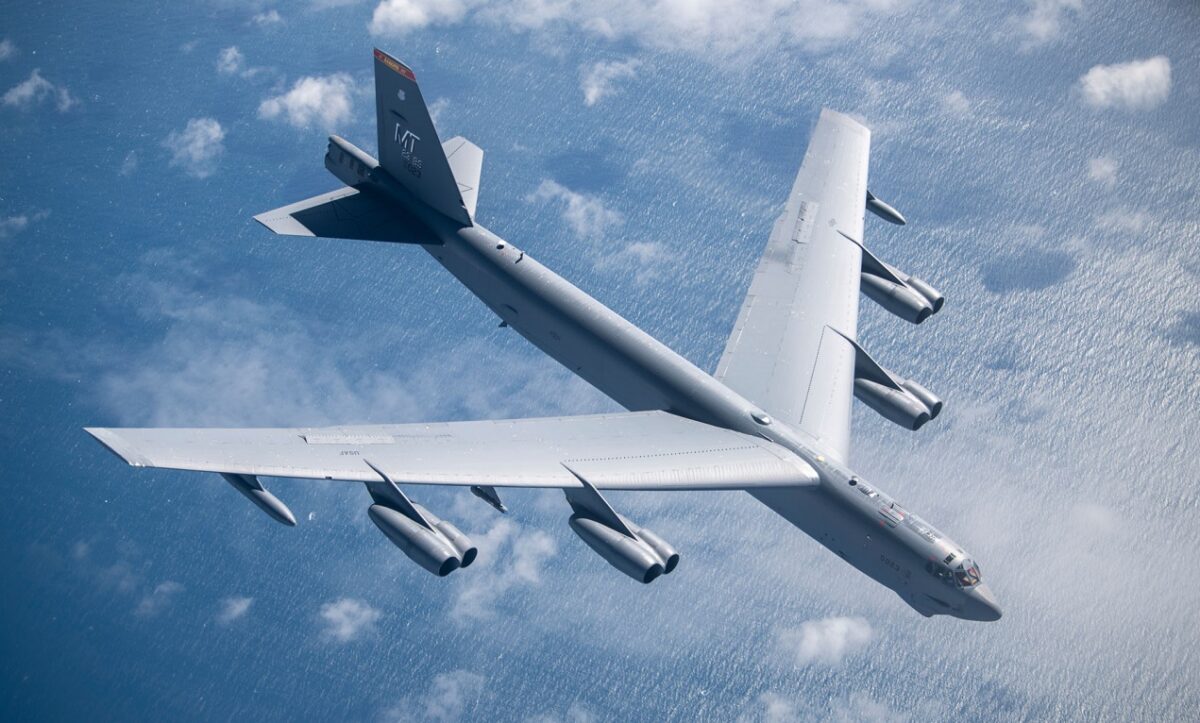
B-52 Bomber. Image Credit: US Air Force.
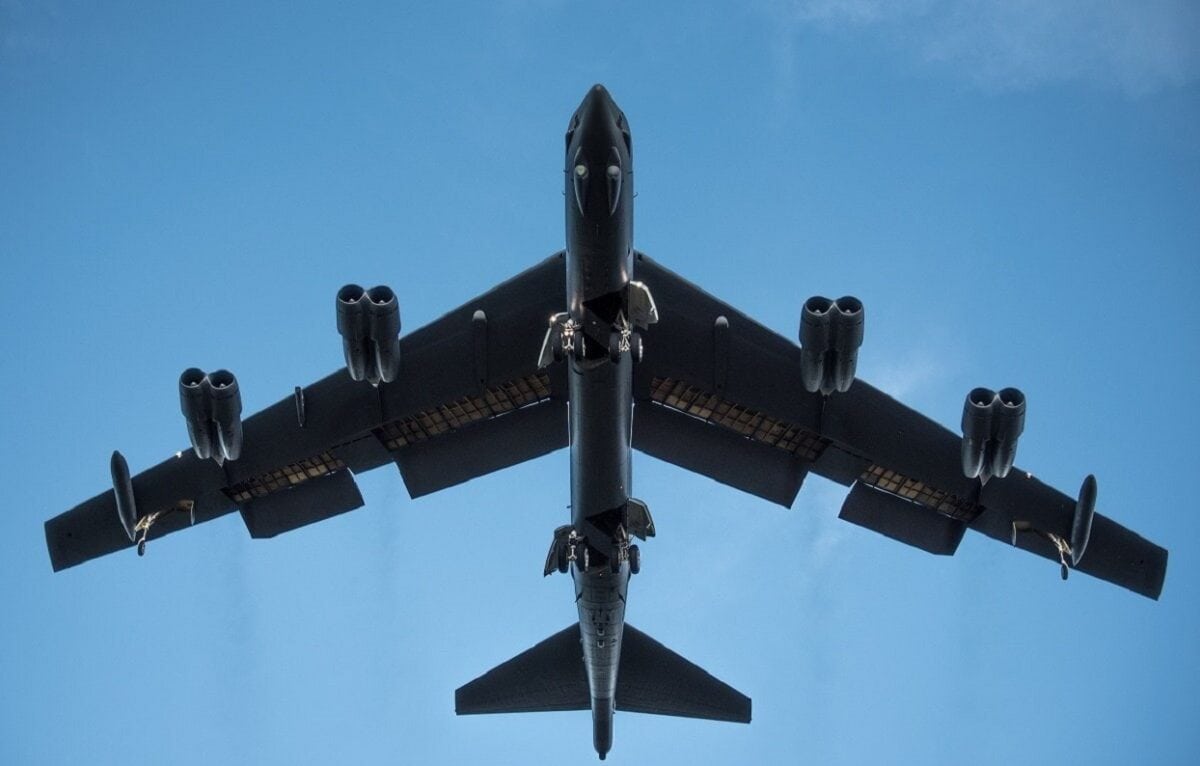
Image: Creative Commons.
Talk about ordnance, this nuclear-capable platform has dropped or launched everything from dumb-bombs to precision-guided munitions, cruise missiles, and maybe someday hypersonic weapons. Once airborne it can be refueled in air and make it to anywhere in the world in hours. A workhorse during Vietnam, Operation Desert Storm, the Second Gulf War, and Afghanistan, the B-52 just won’t quit.
5 Best Airplanes in the History of the U.S. Military: F-4 Phantom
Many ground-pounders in Vietnam can tell you stories about the F-4 Phantom. This remarkable fighter saved numerous grunts by offering close air support in dangerous situations with the Viet Cong and North Vietnamese Army. Veterans swear the airplane saved their lives.
The F-4 is a record-setting airplane. It carried 18,000 pounds of munitions during Vietnam. The F-4 is still so popular it has been in use with the air forces of several countries. At least 5,000 have been built and it can play multiple roles in air superiority as a dog-fighter or bomber. The engine thrust and aerodynamics were so good that both the Navy Blue Angels and the Air Force Thunderbirds flew the F-4 from 1969 to 1973.
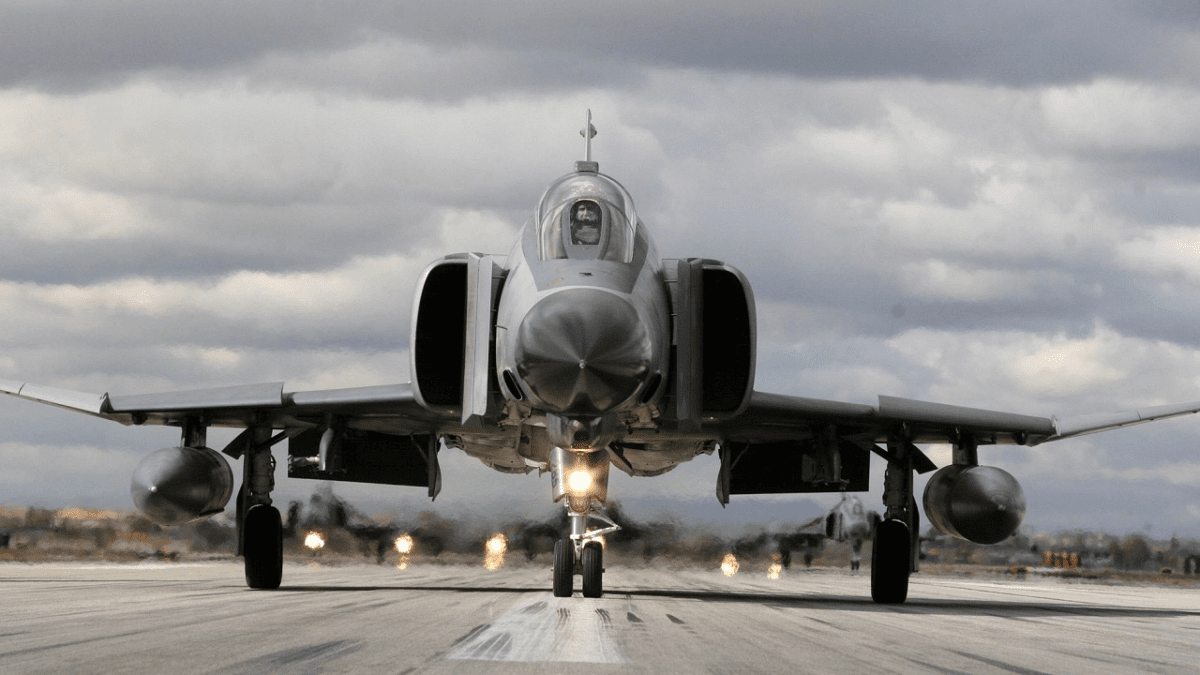
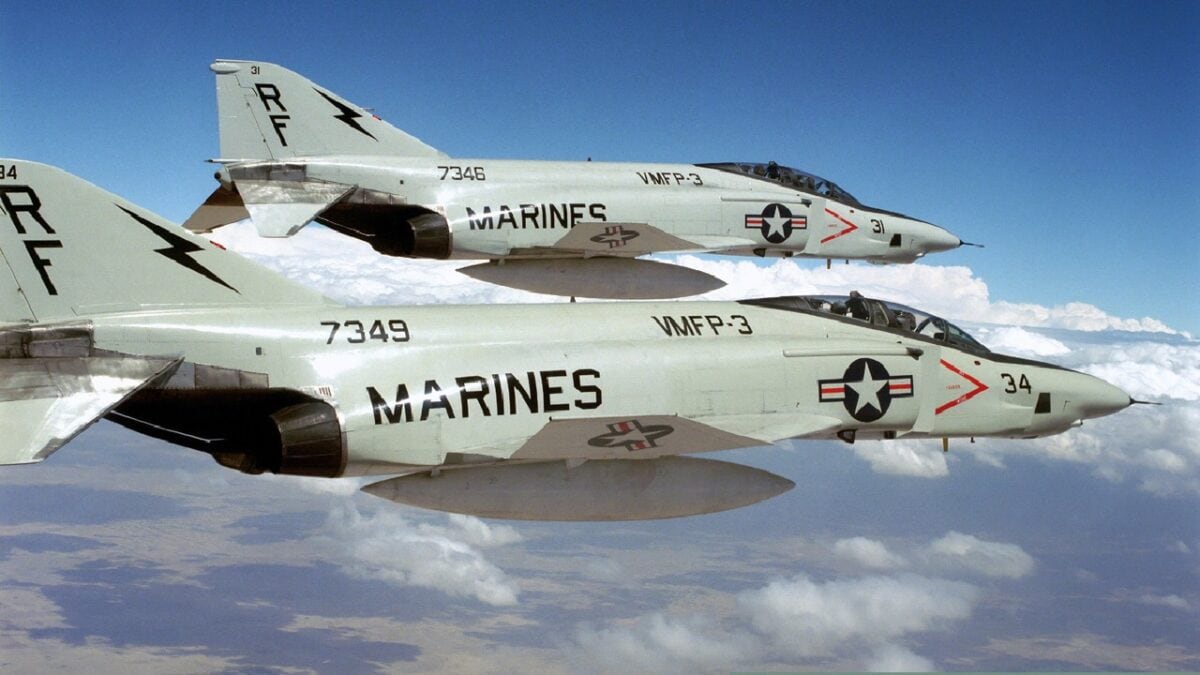
A right rear view of two RF-4B Phantom II aircraft of Marine Photo Reconnaissance Squadron Three (VMFP-3) over El Toro Marine Corps Air Station during a training mission.

F-4 Phantom. Image Credit: Creative Commons.
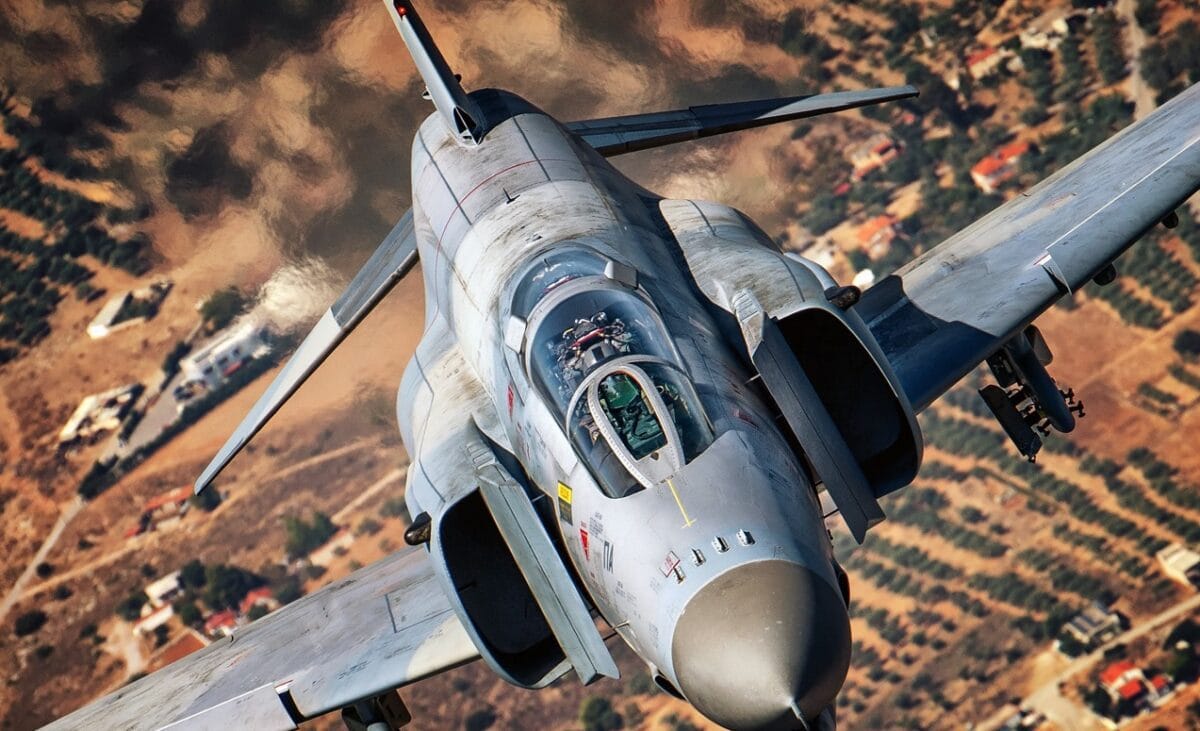
F-4 Phantom. Image Credit: Creative Commons.
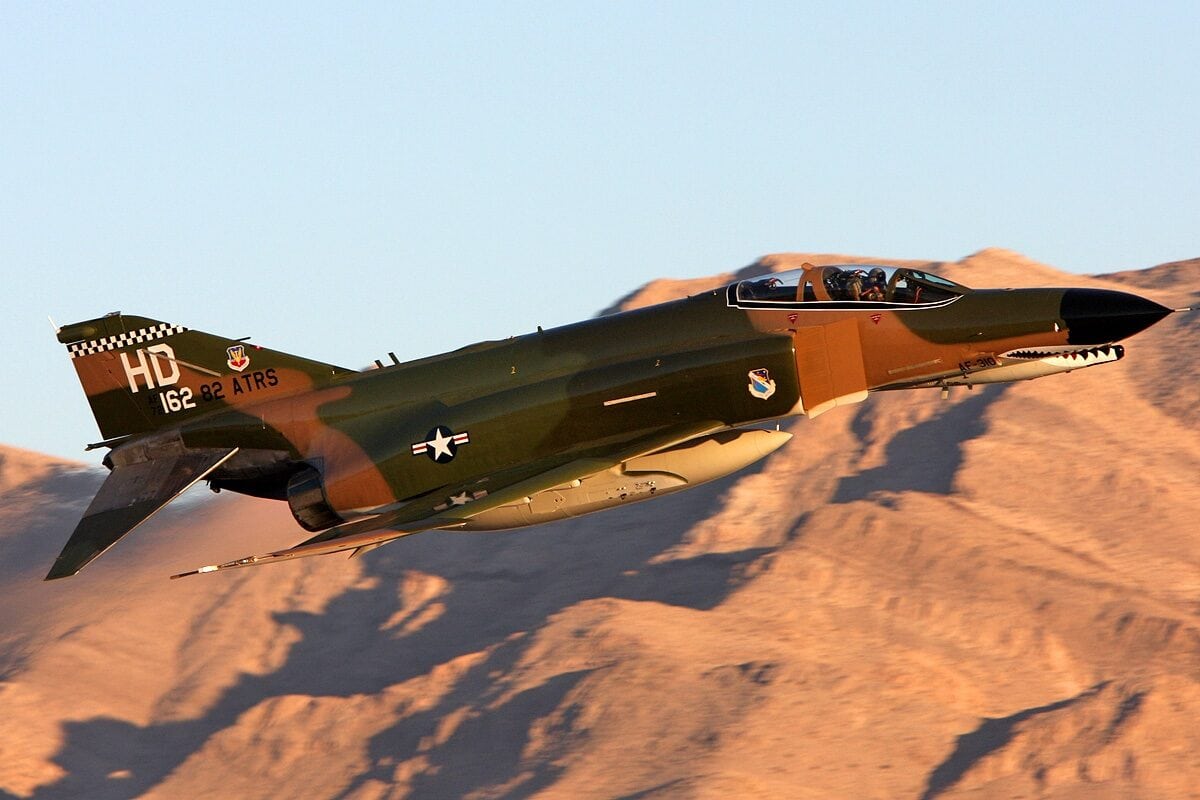
Image: Creative Commons.
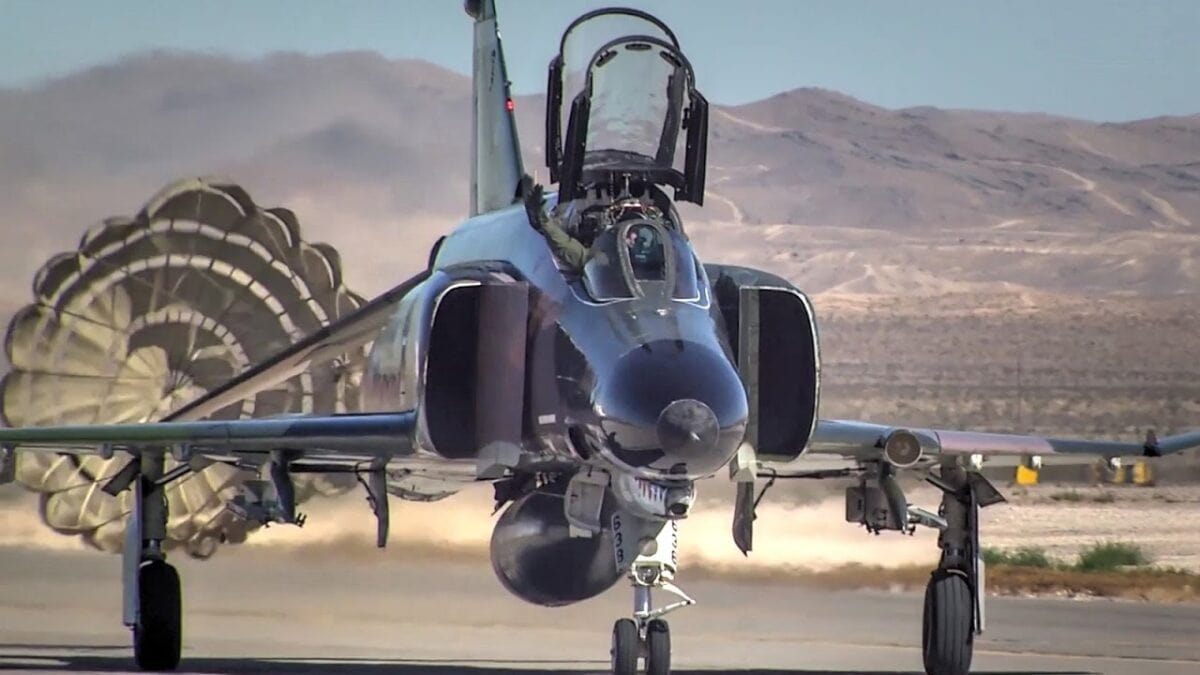
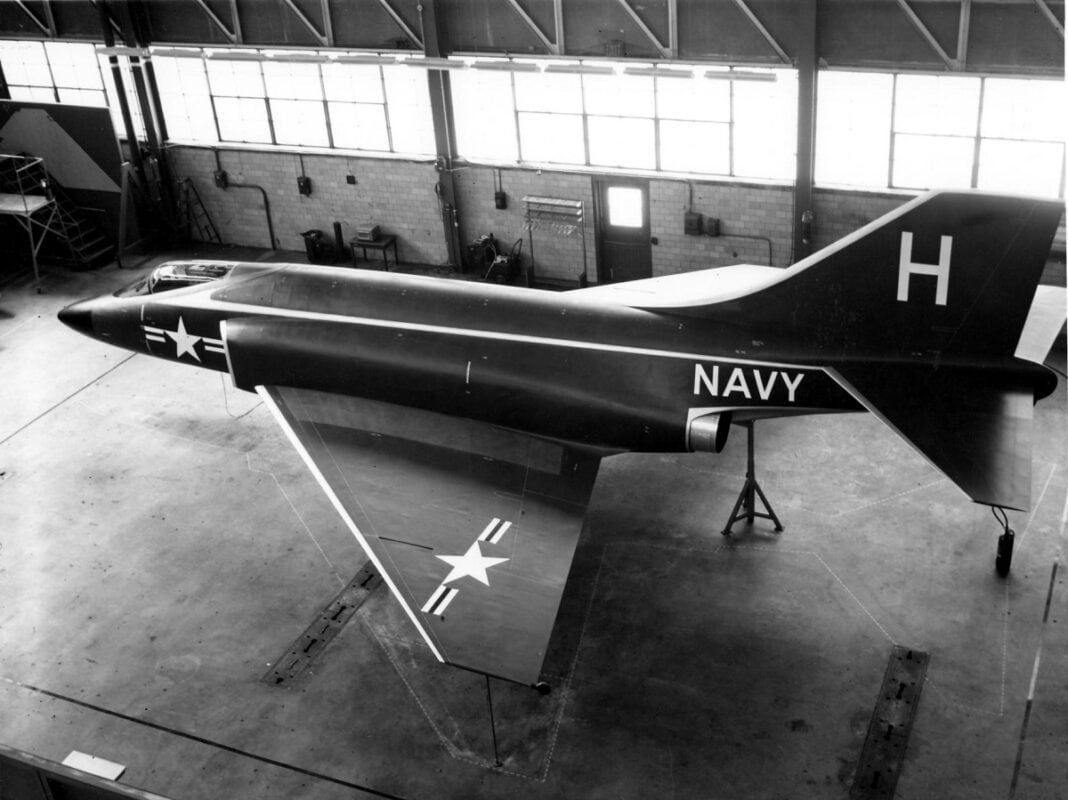
Mockup of the proposed U.S. Navy McDonnell F3H-G/H. In 1953, McDonnell Aircraft began work on revising its F3H Demon fighter, seeking expanded capabilities and better performance. The company developed several projects including a variant powered by a Wright J67 engine, and variants powered by two Wright J65 engines, or two General Electric J79 engines. The J79-powered version promised a top speed of Mach 1.97. On 19 September 1953, McDonnell approached the United States Navy with a proposal for the Super Demon. Uniquely, the aircraft was to be modular — it could be fitted with one- or two-seat noses for different missions, with different nose cones to accommodate radar, photo cameras, four 20 mm cannon, or 56 FFAR unguided rockets in addition to the nine hardpoints under the wings and the fuselage. The Navy was sufficiently interested to order a full-scale mock-up of the F3H-G/H. It depicted the different sizes of the Wright J65 and General Electric J79 afterburners, with the J79 on the right side of the mockup and the J65 on the left. The further development led directly to the F4H Phantom II.
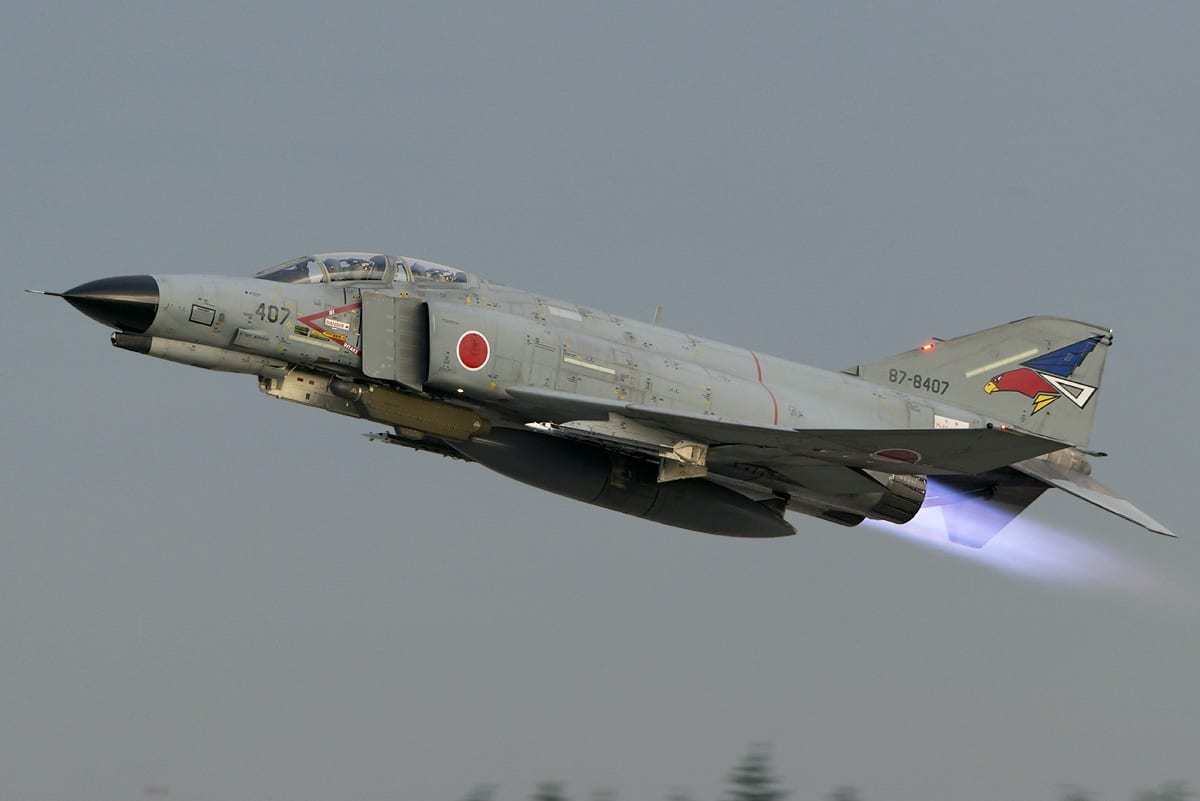
McDonnell Douglas (Mitsubishi) F-4EJ Kai Phantom II
5 Best Airplanes in the History of the U.S. Military: F-14 Tomcat
The F-14 Tomcat was meant to protect aircraft carriers from bombers and it did its job with élan and style for many years. The Top Gun fighter just looked great with its variable-sweep wings.
It entered service in 1974 and flew with distinction through many adversarial roles during the Cold War – mainly to intercept Soviet fighters and scare them away from the battlespace.
It could find an enemy warplane with the help of its back-seat radio intercept officer and get missile-lock on bogeys with ease. The Tomcat deployed one of the effective over-the-horizon radar-guided missiles – the Phoenix AIM-54A that had a range of over 100 miles.
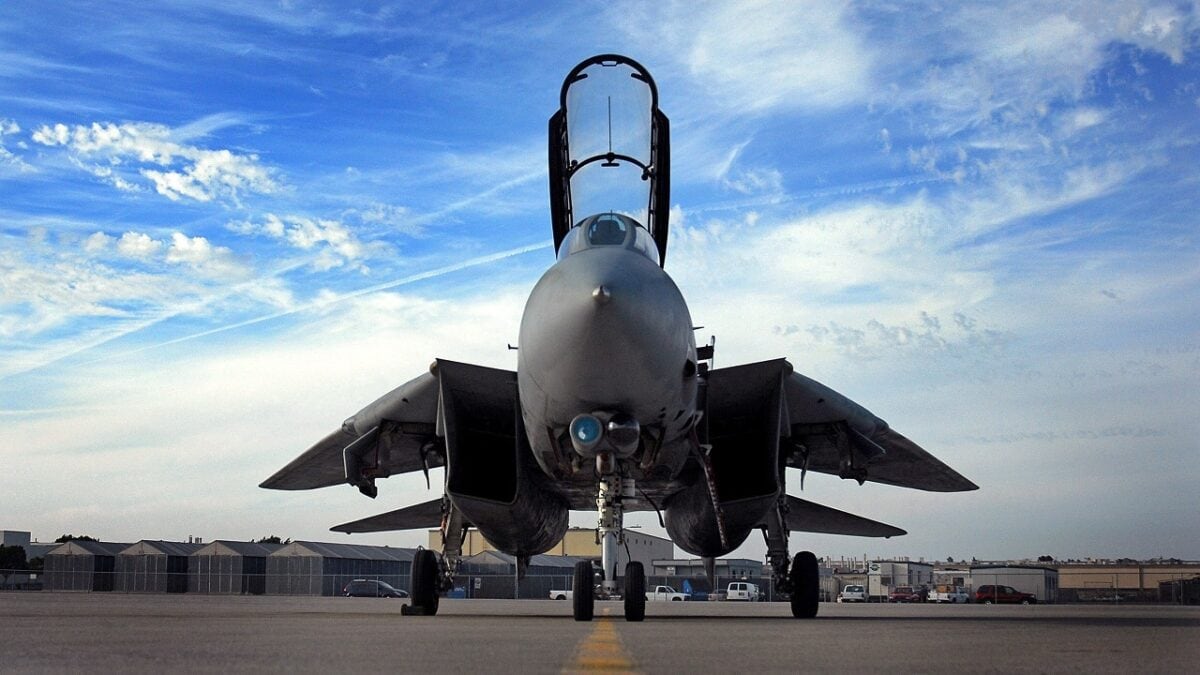
A U.S. Navy F-14D Tomcat aircraft from Fighter Squadron 31, sits on the flight line after completing its final flight at Naval Base North Island, San Diego, Calif., on Sept. 29, 2006. After 36 years of service, the Tomcat is being replaced by the F/A-18E/F Super Hornet aircraft.
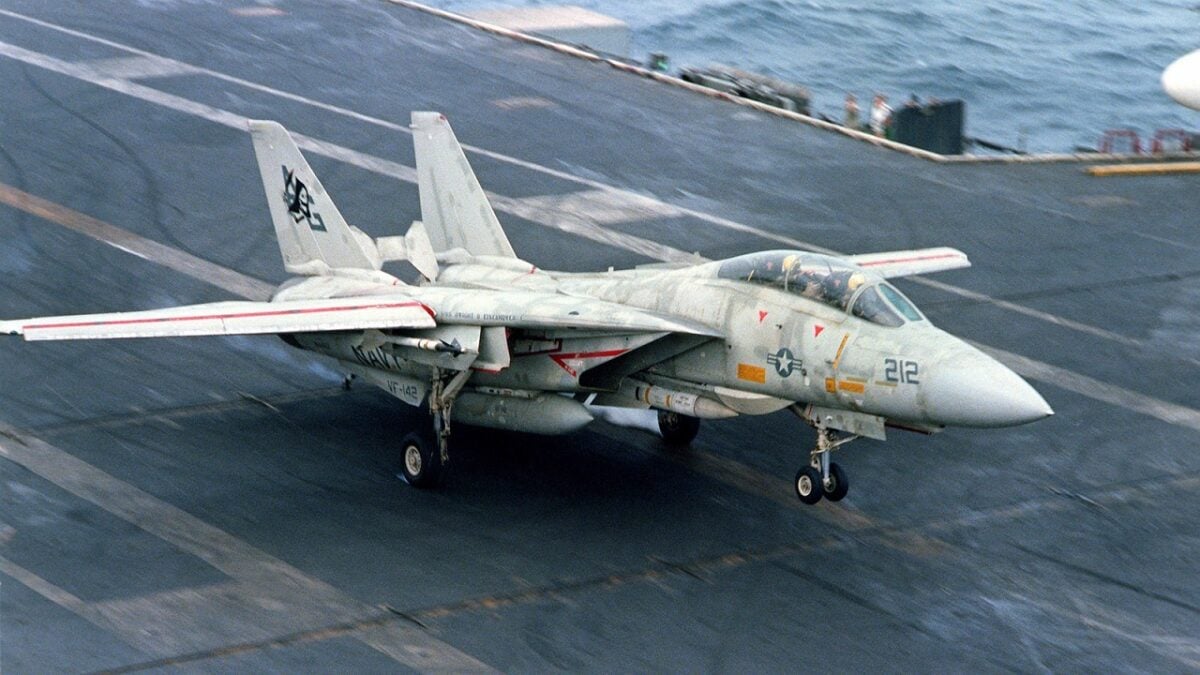
An F-14 Tomcat aircraft makes an arrested landing on the flight deck of the nuclear-powered aircraft carrier USS DWIGHT D. EISENHOWER (CVN-69). The F-14 is assigned to Fighter Squadron 142 (VF-142).

F-14 Tomcat. Image Credit: Creative Commons.
It also carried a full host of short to medium-range missiles and bombs. It could fly at nights and in all weather, which made it effective off aircraft carriers.
The F-14 was just hard to beat.
5 Best Airplanes in the History of the U.S. Military: F-35 Lightning II
A modern fighter that deserves a mention is the F-35 Lighting II. A product of the Joint Strike Fighter program, this 5th-generation stealthy warplane is top of the heap in many air forces around the world. 15 countries are flying it. There are three versions of the jet depending on the mission – whether taking off from the ground, aircraft carriers, or short-take-off and vertical landing.
The F-35 can intercept, dogfight, bomb, collect intelligence, and support fighters on the ground.
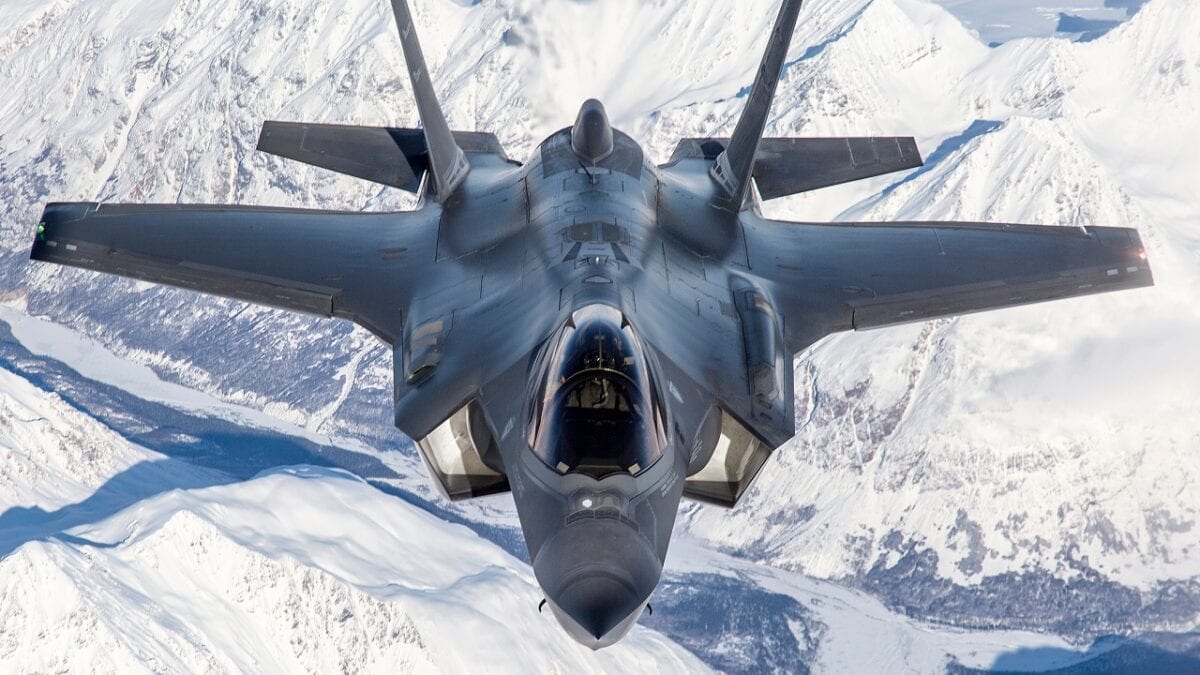
F-35 Stealth Fighter. Image Credit: Creative Commons.
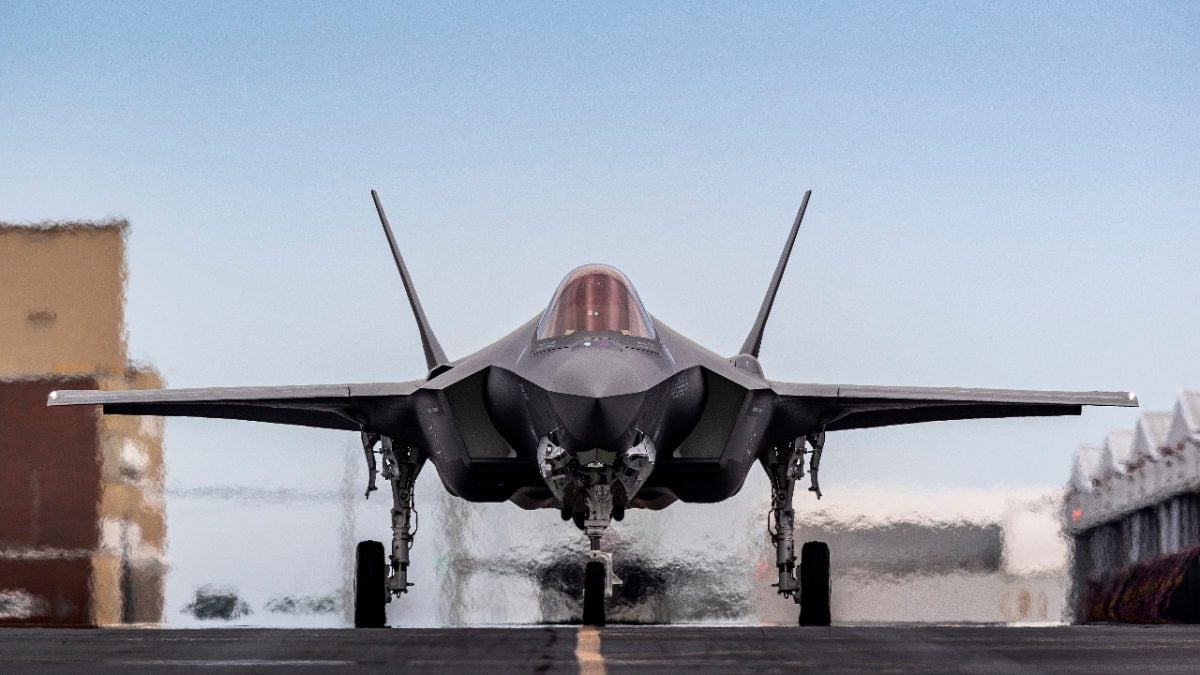
F-35 image. Image Credit: Creative Commons.
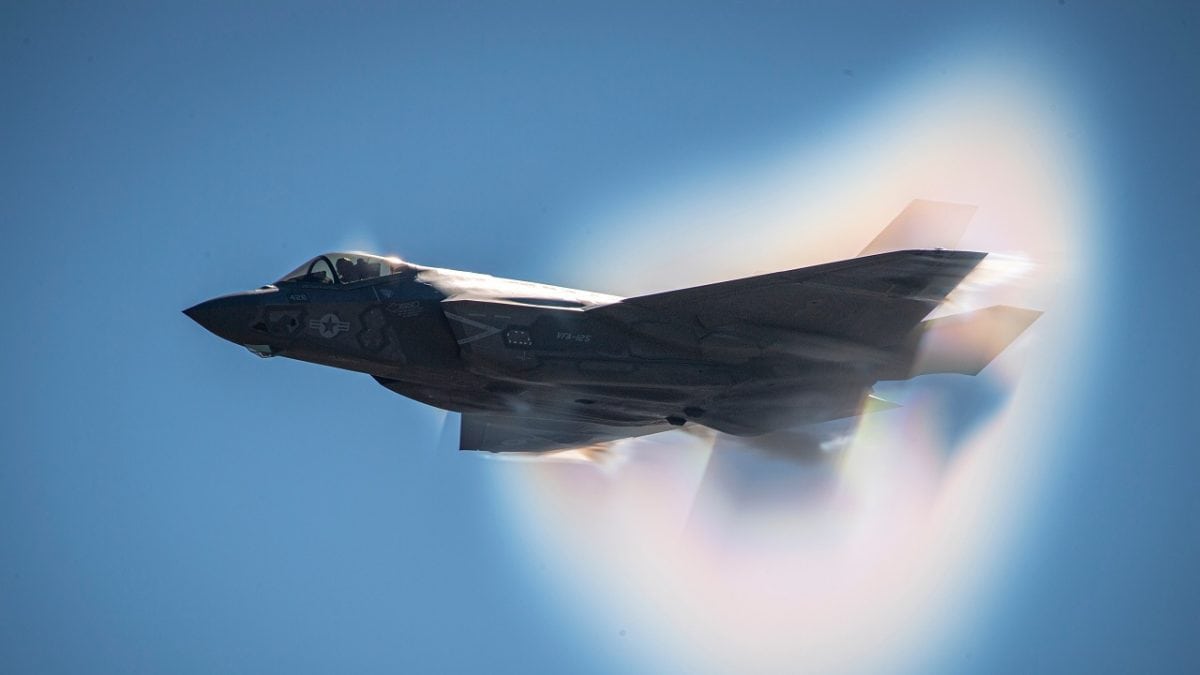
A U.S. Navy F-35C Lightning II fighter jet performs during the California International Air Show in Salinas, California, Oct. 29, 2021. The F-35C has a larger wingspan and internal fuel capacity as well as stronger landing gear than the F-35A and F-35B variants. (U.S. Air Force photo by Staff Sgt. Andrew D. Sarver)
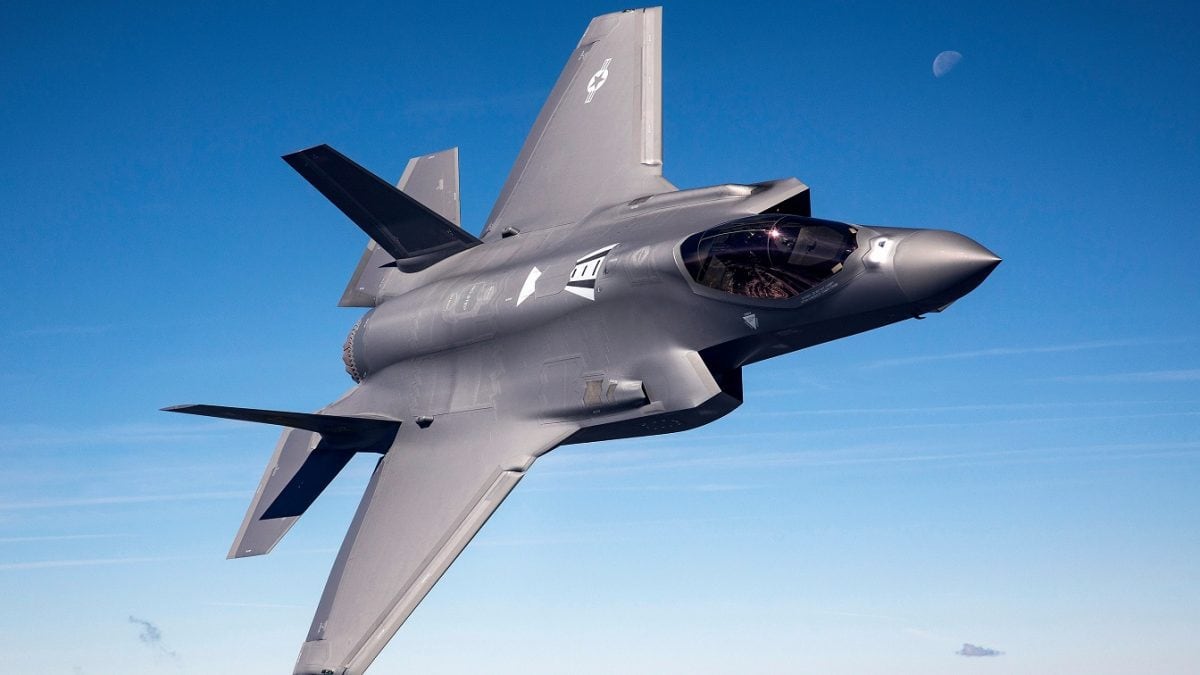
F-35A Joint Strike Fighter. Image Credit: Creative Commons.
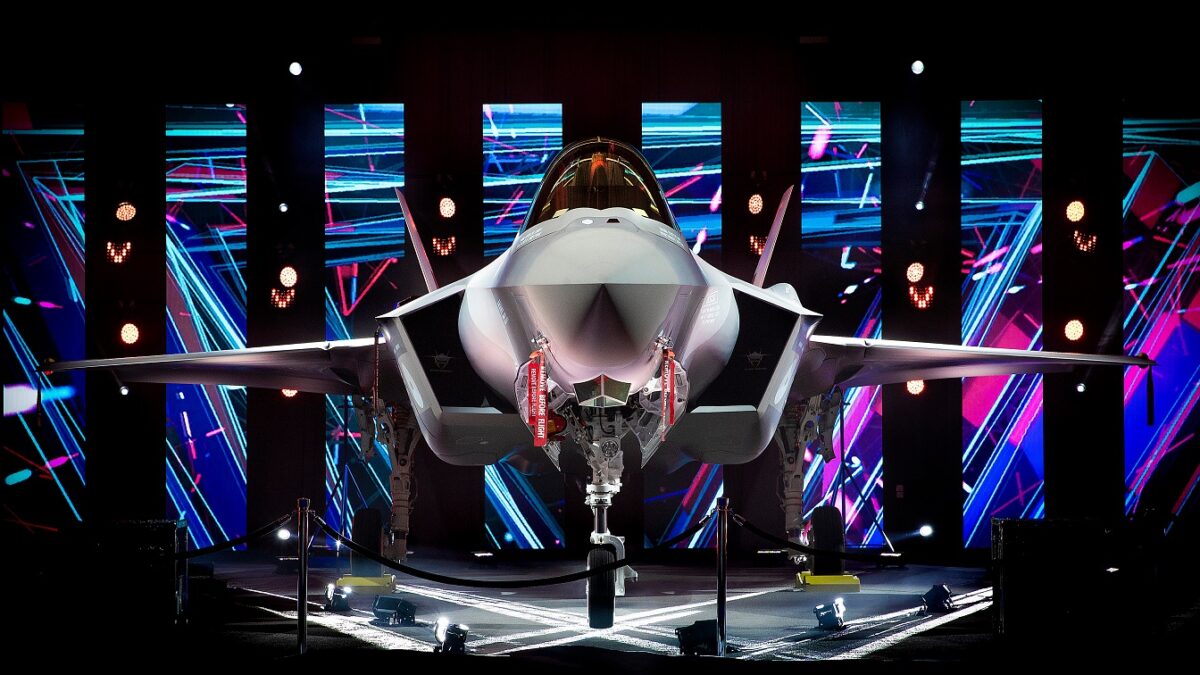
F-35 JSF from the Netherlands. Image Credit: Lockheed Martin.
U.S. and NATO pilots lick their chops when contemplating all those varied missions that can be executed with just one airplane. As a result, Russia has been forced to speed up its next-generation stealth fighter program. But Moscow better get ready, by 2035, there will be at least 500 F-35s deployed in Europe.
My Favorite
My favorite airplanes may be something of a surprise, but I chose two: the F-14 and the B-17. It sounds cliché, but I love the Tomcat because of the movie Top Gun and the B-17 because of a video game I used to play called 50 Mission Crush. The object of the game was to somehow survive 50 different bombing runs without getting killed in the simulator. But popular culture aside, you can’t go wrong with the B-52, the F-4, or the F-35 either.
Now serving as 1945’s Defense and National Security Editor, Brent M. Eastwood, Ph.D., is the author of Humans, Machines, and Data: Future Trends in Warfare. He is an Emerging Threats expert and former U.S. Army Infantry officer. You can follow him on Twitter @BMEastwood.

